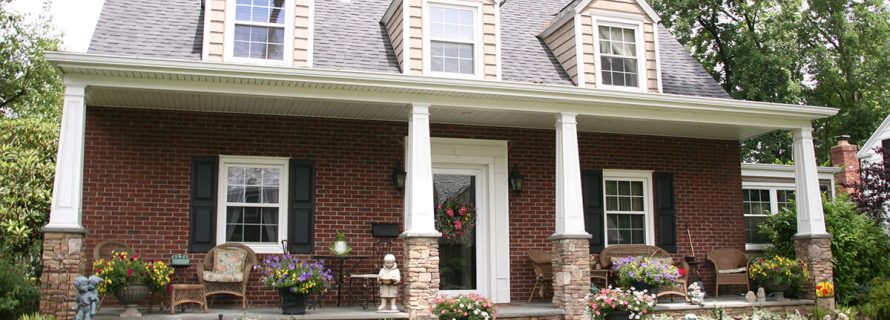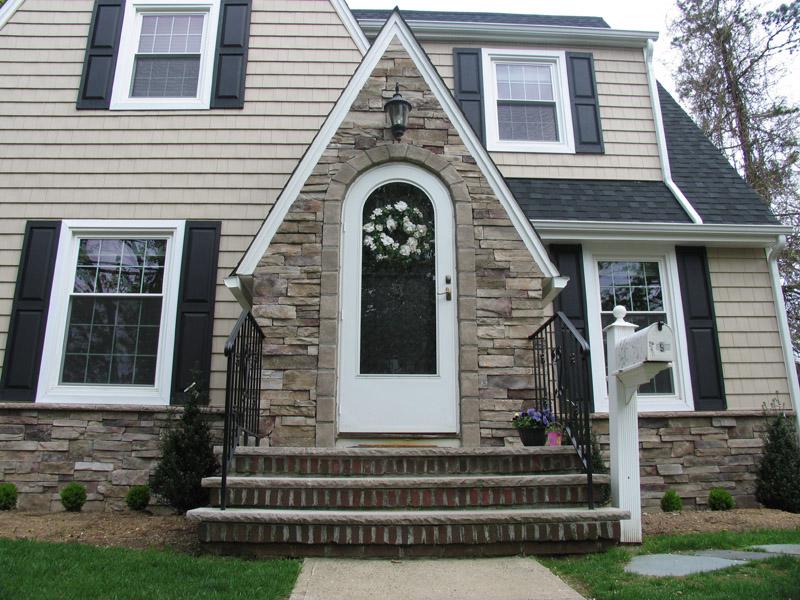Home renovations to protect against severe weather

Some of the most valuable home renovation projects a person can invest in are those that enforce the safety and security of the house. Many of the risks that threaten both the exterior and interior of a residence come from natural elements – such as harsh snow and rain storms and aggressive winds.
Fortunately, there are a handful of ways home residents can improve the durability and strength of their house and protect it from severe weather conditions.
1. Add durable windows
You want to make sure your windows are as secured as possible, seeing as these can be some areas of the home most susceptible to damage. And there is no better time to do that than before colder, more volatile weather rolls in. Over time, window frames can take quite a beating and eventually begin to deteriorate, warp and crack. It is crucial to inspect them for leaks because, if gone unnoticed or untreated for too long, they could lead to costly damage repairs.
"Investing in door and window replacements now can save homeowners in the long run."
Therefore, homeowners are encouraged to choose a window material that offers long term stability and reduces the risk of seal failure and window air leakage, such as fiberglass. Thanks to a quality manufacturing process, these windows are some of the strongest and weather-resistant products available. Plus, they have shown to be as much as eight times as strong as its vinyl counterpart and can complement both the interior and exterior appearance of your home.
2. Use sturdy doors
Because of the damage that wind can do to a home's interior during severe weather, having sturdy doors is just as important as having reinforced windows. To do this, homeowners can invest in a storm door installation, where an additional door is attached to an existing door frame to supplement its strength.
As storm doors evolve, homeowners have more options of what kind of product to choose from. While standard glass doors are still common, they can purchase even more robust doors that have welded frames, tempered glass and heavy gauge durable locks that will deter winds and blowing debris from tearing through the entryway.
This is a pretty simple project that people can do themselves, or they can hire an expert to make sure that their new storm door is as sealed and steady as it needs to be to offer them the best protection possible.

3. Schedule a roof inspection
The roof of your home is one of the most important structures to regularly inspect and maintain. If you notice any discoloration or missing shingles, these are red flags that it may be time for a roof repair or replacement. Without a properly functioning roof, the entire durability and safety of your home is compromised, especially when severe weather hits. It can be difficult to get an accurate assessment of the condition of your room from the ground level, but it's also extremely dangerous to try to go up there to inspect it yourself. This is why it is highly recommended you call a professional contractor to make sure the job is done in an accurate and timely manner.
4. Create a storm shelter in your home
While reinforcing the openings to a home will help protect property from volatile weather, it's important to make sure that the people inside the home have as much protection as possible, too. Take a look at the Tornado Safety and Hurricane Safety checklists from the Red Cross for better preparation for a storm.
In case of an event like a tornado, the safest place for home residents to go is into the basement. It's important to have an area away from windows. Having a finished basement can give families a more comfortable area to wait out the storm. A clean and organized area will also be safer if a storm does hit.
In homes without a basement, the next-best place to go is into a first-level bathroom or interior hall closet. As with the basement, it's important to avoid windows. The bathtub is a good place for residents to sit to provide more partial protection. Sturdy tubs that are well anchored in the home are some of the most stable places to ride out severe weather.
Any kind of unexpected disaster or disruption to the home can be overwhelming. However, while we may not be able to control nature, there are actionable steps we can take to ensure the resiliency of our homes despite severe weather conditions. Taking the time to invest in strong window and door reinforcements now will give homeowners better peace of mind in the long run.
- Additions and New Construction
- All Exteriors
- Alterations
- Basements
- Bathrooms
- Customer Service
- Customer Stories
- Decks
- Design & Planning Show
- DIY
- Doors
- Educational Resources
- Extreme Makeover Home Edition
- Fashion Show
- General Remodeling
- Green Living
- Handyman Home Services
- Home Decor
- Home Entertainment
- Home Improvement
- Home Improvements
- How to Tips
- In The Community
- Kitchens
- Off-the-Wall Remodeling Stories
- Remodeling
- Resources
- Roofing
- Siding
- Social Media
- Sunrooms
- Tips & Tricks
- Trends
- Windows

